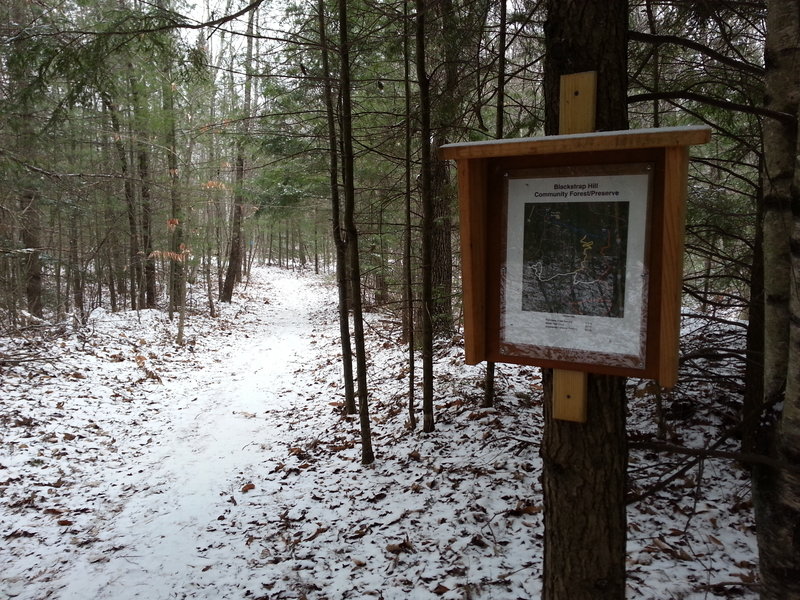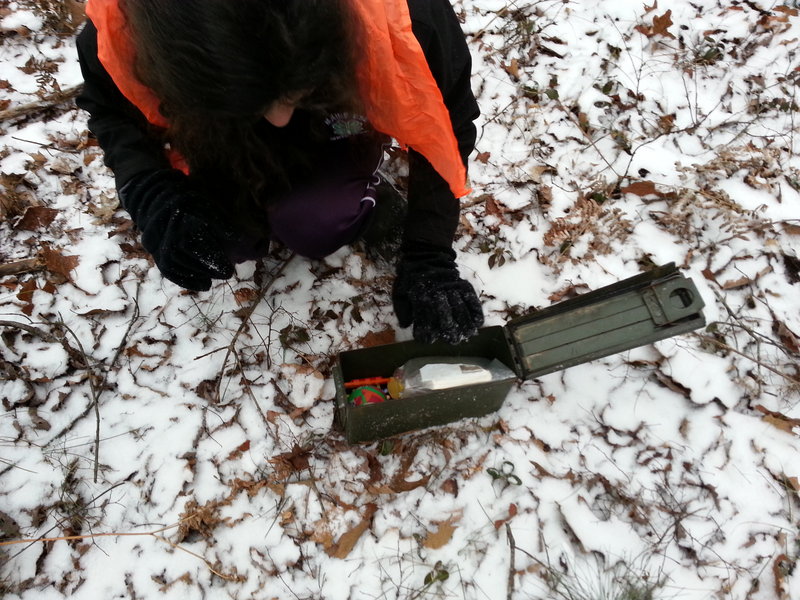It’s not very often that having read Nancy Drew books as a kid comes in handy. But when cracking codes of “mystery” geocaches, you never know what random knowledge you’ll need to puzzle-out the coordinates to find a hidden treasure.
Geocaching is a game that uses GPS coordinates to find a hidden box filled with inexpensive trinkets and a logbook. Players, called geocachers, download the coordinates to their GPS units — or in most cases these days, a mobile phone app — and then navigate their way to the box.
There are many variations on the type of geocaches a player can find. A “traditional” box is the most common. These are typically the size of a plastic kitchen-type container (or metal box) hidden in or around trees and rocks, and typically covered with dead branches or bark (boxes are not buried). The coordinates to the geocache are posted on geocaching.com and the easiest way to play the game these days is to find the listing using a geocaching mobile app on your phone. Once found, you follow the compass screen until you arrive at the hiding location.
A variation of the traditional cache — and one that the girls and I have enjoyed — requires solving a puzzle to actually get the coordinates. It’s a multi-step process that requires a little brainpower, and sometimes a computer search engine before you head out to the field.
I found the Nancy Drew-themed mystery cache on geocaching.com and put my 16-year-old daughter (also a Drew fan from her younger years) on the job to solve the algebra-like puzzle. She had to identify the coordinates’ missing numbers with the book title’s order of publication. For instance, the letter “A” stood for “The Secret of the Old Clock,” which is the first book in the series. There were six books listed with corresponding letters and she had to give each one a number to translate to the final coordinates.
It might sound complicated, but it really was not all that hard thanks to a website she found with a book order list.
On this listing’s page was a feature we took advantage of for the first time — geochecker.com. This allows players working out mystery cache clues to check their coordinates. This “checker” link confirmed my daughter’s final coordinates were in fact accurate before heading out to the location to find the box.
We hiked on a new-to-us trail on the Falmouth/Cumberland line to find this particular cache. We have driven past the trailhead many times and never noticed it. But that’s another aspect of this game that I enjoy — finding new hiking trails. Even though I’m pretty well plugged into popular trail systems, there are a lot of smaller community trails that are less well-known and it’s fun to discover them.
We found several mystery caches the day we went hiking. One included knowing some random Red Sox trivia and another required knowing our Roman numerals (thank you Google for refreshing my memory on those).
Some of these mystery caches were too small to leave a trinket (rules of the game require that if you take something from the geocache, you leave something else in its place). But at others I was able to find a new home for some Mighty Beanz we found kicking around our house.
If you’re new to the game, try finding a traditional geocache or two. Then give a mystery cache with a difficulty rating of 2 or 3 a try (5 is the hardest). Trust me that you and the kids will feel kind of smart by the end of the day.
Wendy Almeida can be contacted at 791-6334 or at:
wea@mainetoday.com
Twitter: wea1021
Send questions/comments to the editors.





Success. Please wait for the page to reload. If the page does not reload within 5 seconds, please refresh the page.
Enter your email and password to access comments.
Hi, to comment on stories you must . This profile is in addition to your subscription and website login.
Already have a commenting profile? .
Invalid username/password.
Please check your email to confirm and complete your registration.
Only subscribers are eligible to post comments. Please subscribe or login first for digital access. Here’s why.
Use the form below to reset your password. When you've submitted your account email, we will send an email with a reset code.